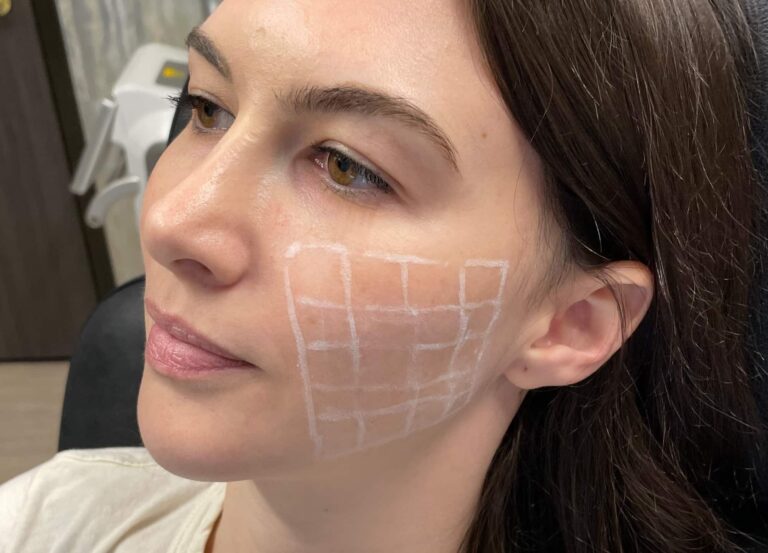Health insurance is one of the great riddles of our time. Trying to understand what is and is not covered—and, even more challenging, why—is like trying to do long division after enjoying a large margarita. And in the case of plastic surgery, when there can be both medical and aesthetic reasons behind the decision, the line between what health care insurance pays for and what it doesn’t is a moving target. “It has become more and more difficult to get insurance to cover plastic surgery cases, even if there is a medical justification for the case,” says Dr. Lesley Rabach, a double board-certified facial plastic surgeon in New York City. (Basically, if you’re hoping to find an insurance loophole that’ll cover your elective cosmetic surgery procedure, such as a facelift or liposuction, you’re going to be sorely disappointed.)
And even if insurance covers the cost of a non-elective surgical procedure, it may not end there. “If one of your issues is covered, this may not mean that the insurance company just pays whatever the surgeon charges,” explains Dr. Lisa Cassileth, a board-certified plastic surgeon in Los Angeles. “It means that [the company] will consider whether the benefits of your insurance cover it—but a skilled insurance specialist within the plastic surgeon’s practice is still necessary, to figure out what [your insurer is] likely to pay.” Clearly, it’s a bit of a guessing game. But certain cases are more likely to be covered than others, depending on the circumstances, medical necessity, and your exact health insurance plan.
1. Botox
Botox is an FDA-approved treatment for those suffering from chronic migraines, and many insurance companies—including Medicare and Medicaid plans—will cover partial or full costs. According to the American Migraine Foundation, patients typically must have unsuccessfully tried two other preventative migraine treatments before Botox is approved by the insurance provider.
2. Functional rhinoplasty
A nose job may be covered by insurance if you’re getting it to address a medical issue, such as a deviated septum or “difficulty breathing, with proper documentation that the patient failed nasal steroid sprays,” says Dr. Rabach. Insurance may also partially cover certain medications prescribed to relieve a septal disturbance. The simplest way to put it: With a functional rhinoplasty, “the internal work is covered by the insurance,” Dr. Rabach explains. “The outer, cosmetic portion is never covered.”
3. Breast reduction surgery
If you have disproportionately large breasts—so much so that they cause medical concerns and affect your quality of life—insurance may cover surgery to reduce the size. The medical concerns in question include neck and back pain and skin infections. While that seems straightforward, you may still have to jump through a few extra hoops to get it covered. “Insurance wants to make sure that you can’t get rid of the extra size by weight loss alone,” says Dr. Cassileth. “Most insurers use the Schnur scale, which makes sure that the amount of breast tissue removed would be significant enough for your height and weight.”
4. Blepharoplasty
A blepharoplasty, aka an upper eye lift, can make your eyes look more open and give your face a more refreshed, alert appearance. But it might be covered (and just partially, at that) in only one case—specifically, “if there has been documentation by an ophthalmologist, proving a visual field defect, [meaning that] the eyelid skin is ‘hanging’ over the eyelashes, physically restricting vision,” explains Dr. Rabach. If your vision isn’t affected, then you’ll likely have to pay out of pocket.
5. Limited breast implant complications and breast reconstruction
Breast implants aren’t always a one-and-done surgery. In some cases, “they contract, rupture, cause pain, get infected, and do all sorts of things they aren’t supposed to do,” says Dr. Cassileth, who has had breast augmentation patients who’ve needed 10 surgeries (and counting) to correct their implants.
In the case of capsular contracture (in which the scar tissue around an implant hardens and contracts, causing pain and distortion), the contracture is measured on a scale from Grade I to Grade IV. “Grade IV means a very hard implant and is usually covered by insurance policies,” says Dr. Cassileth. However, your insurance will cover only the capsulectomy and pain medications. It won’t cover the new replacement implant or the acellular dermal matrix (ADM) that may be used to shield it.
The removal of implant can also be covered, in the case of an infection, meaning your breast is red or has a sore spot, or if a silicone implant has ruptured. (For saline implants, neither the removal nor capsulectomy is typically covered.) Finally, the Women’s Health and Cancer Rights Act of 1998 requires all group health plans that pay for a mastectomy after a breast cancer diagnosis to also cover prostheses and reconstructive surgery procedures.
Related: Silicone or Saline? 5 Things to Know About Picking the Right Breast Implants
6. Skin cancer removal
In many cases, the removal of skin cancer and closing of the wound via Mohs surgery may be covered by insurance, says Dr. Rabach. However, it does depend on the complexity of your case and your exact insurance benefits, so it’s worth confirming with your plan provider, as it may cover the skin cancer removal but not the following reconstruction, for instance. (Either way, the expense shouldn’t stop you from pursuing treatment for a health problem like skin cancer, which is why the American Academy of Dermatology has compiled a list of financial resources.)
7. Limited post-baby abdominal issues
If you have sagging skin following pregnancy, surgery may be your best option—but insurers can be picky about what’s covered. Scars? Maybe, since C-section scars can develop in all sorts of gnarly ways. “These scars can be tethered down, hypertrophic, and keloid,” says Dr. Cassileth. In those cases, scar removal may be covered—but not all scars will qualify.
If your belly button sticks out, you may have an umbilical hernia. “That should be repaired with insurance support, as it can allow for bowel entrapment,” says Dr. Cassileth. However, rectus diastasis, in which the rectus muscles split post-pregnancy and may look like a hernia, isn’t covered, since it’s not a true hernia.
Finally, a panniculectomy may be covered. Not to be confused with an abdominoplasty, aka tummy tuck, this surgery involves removing skin that overhangs onto the pubic area and legs. “The belly button is not moved, and it doesn’t tighten the upper abdomen,” says Dr. Cassileth. The only way it’ll be approved for insurance coverage is if you have recurring skin infections or lesions beneath the hanging skin; if that’s the case, they should be documented and photographed accordingly in order to get the claim approved.











